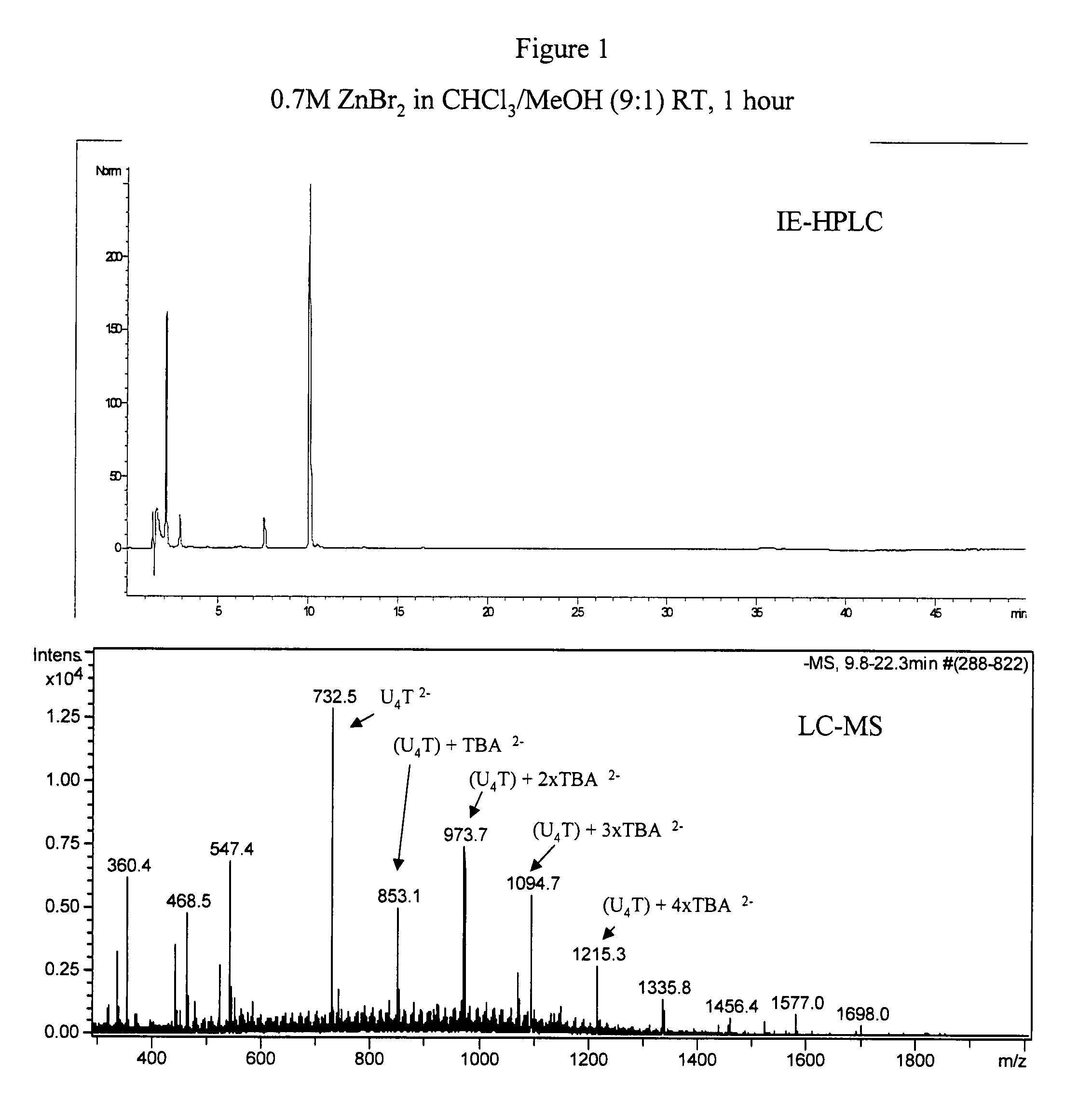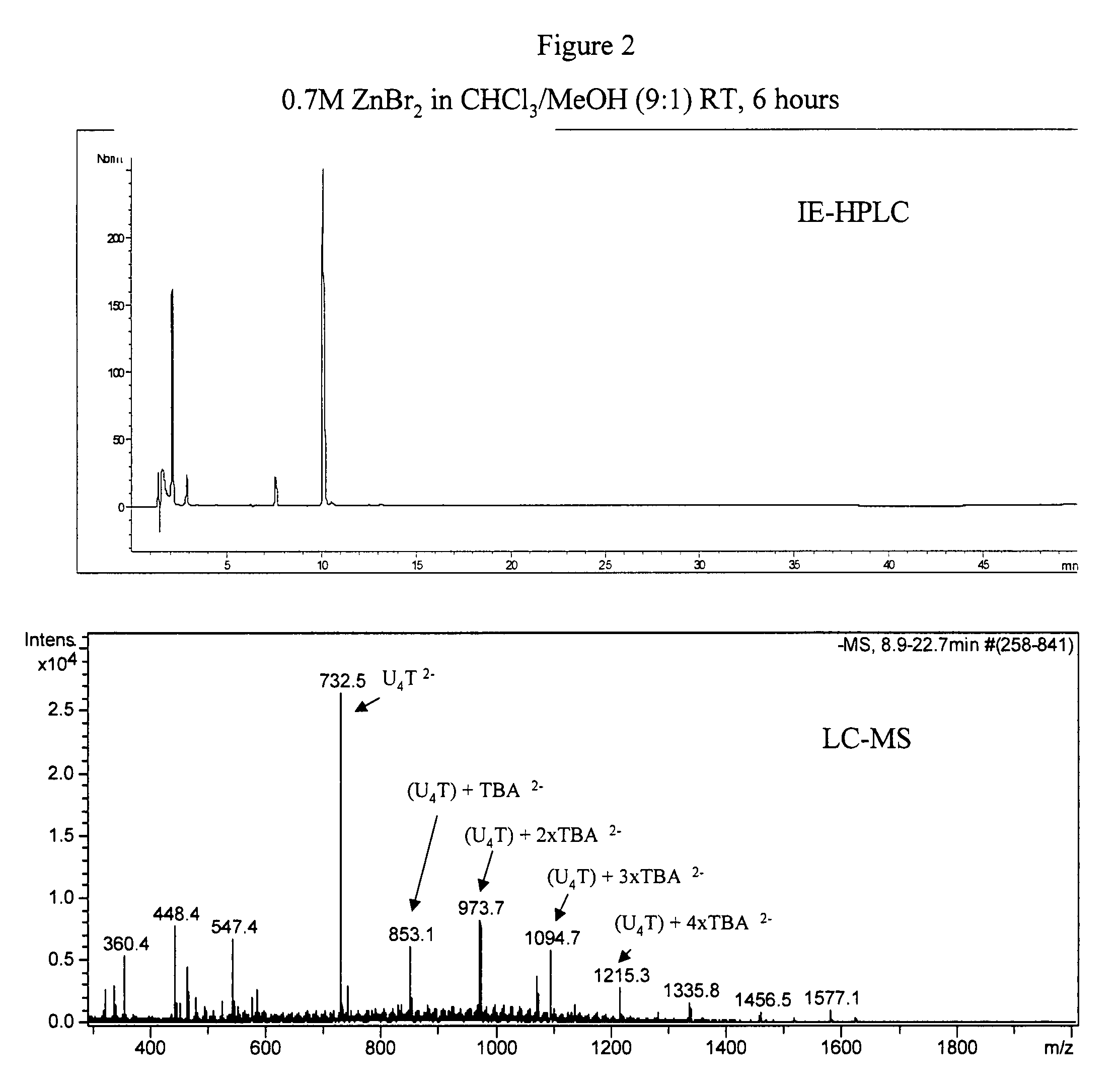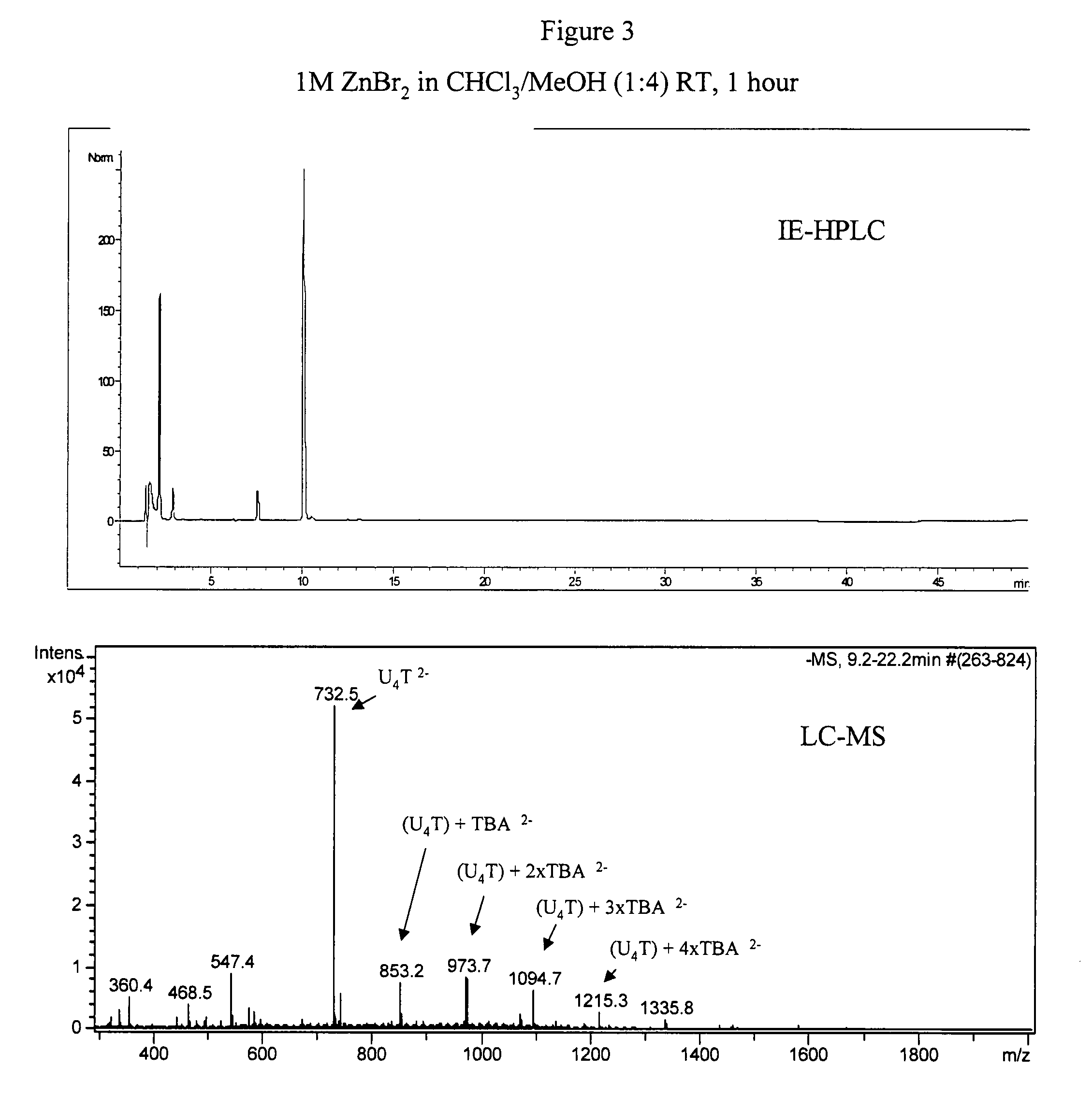2′-silyl containing thiocarbonate protecting groups for RNA synthesis
a technology of thiocarbonate and synthesis group, which is applied in the direction of bulk chemical production, organic chemistry, sugar derivatives, etc., can solve the problems of insufficient oligobonucleotide syntheses carried out using tbdms, less stable rna internucleotide bond, and difficult chemical synthesis of rna. to achieve the effect of efficient coupling reaction
- Summary
- Abstract
- Description
- Claims
- Application Information
AI Technical Summary
Benefits of technology
Problems solved by technology
Method used
Image
Examples
example 1
Synthesis of 5′,3′-O-(Tetraisopropyldisiloxane-1,3-diyl) 2′-O-(p-nitrophenyl)oxycarbonyl protected uridine
[0201]5′,3′-O-(Tetraisopropyldisiloxane-1,3-diyl) uridine (15 millimoles (mmole)) was coevaporated 3 times with pyridine, and then dried on vacuum pump for 12 hours (h). Anhydrous pyridine (150 milliliters (mL)), DMAP (6 mmole) and p-nitrophenyl chloroformate (22.5 mmole) were added, and the mixture was stirred at room temperature for 16 hours. The product was purified by flash chromatography using hexanes with a gradient of ethyl acetate (EtOAc) (0-60%).
[0202]Yield 100%
[0203]ESI MS: 658 (M+Li), 686 (M+Cl)
[0204]This example illustrates regioselectively protecting the 2′ hydroxyl group of a nucleoside with a carbonate protecting group.
example 2
Synthesis of 5′,3′-O-(Tetraisopropyldisiloxane-1,3-diyl) 2′-O-t-butylthiocarbonyl (BSC) uridine
[0205]5′,3′-O-(Tetraisopropyldisiloxane-1,3-diyl) 2′-O-(p-nitrophenyl)carbonate protected uridine (15 mmole) was coevaporated 3 times with pyridine, and then dried on vacuum pump for 4 hours. Anhydrous pyridine (150 mL) and sodium 2-methyl-2-propanethiolate (24 mmole) were added, and the mixture was stirred at room temperature for 16 hours. The product was purified by column chromatography using hexanes with a gradient of EtOAc (0-30%). Yield 76.4% ESI MS: 609 (M+Li), 637 (M+Cl)
[0206]This example illustrates transforming a carbonate protecting group into a thiocarbonate protecting group.
example 3
Synthesis of 5′,3′-O-(Tetraisopropyldisiloxane-1,3-diyl) 2′-O-Ethylthiocarbonyl (ESC) uridine
[0207]5′,3′-O-(Tetraisopropyldisiloxane-1,3-diyl)uridine (15 mmole) was coevaporated 3 times with pyridine, and then dried on vacuum pump for 12 hours. Anhydrous pyridine (150 mL), and ethyl chlorothioformate (18 mmole) were added, and the mixture was stirred at room temperature for 16 hours. The product was purified by column chromatography using hexanes with a gradient of chloroform (50-100%).
[0208]Yield 74.3%
[0209]ESI MS: 581 (M+Li), 609 (M+Cl)
[0210]This example illustrates regioselectively protecting the 2′ hydroxyl group of a nucleoside with a thionyl carbonate protecting group.
PUM
| Property | Measurement | Unit |
|---|---|---|
| structure | aaaaa | aaaaa |
| nucleic acid | aaaaa | aaaaa |
| stable | aaaaa | aaaaa |
Abstract
Description
Claims
Application Information
 Login to View More
Login to View More - R&D
- Intellectual Property
- Life Sciences
- Materials
- Tech Scout
- Unparalleled Data Quality
- Higher Quality Content
- 60% Fewer Hallucinations
Browse by: Latest US Patents, China's latest patents, Technical Efficacy Thesaurus, Application Domain, Technology Topic, Popular Technical Reports.
© 2025 PatSnap. All rights reserved.Legal|Privacy policy|Modern Slavery Act Transparency Statement|Sitemap|About US| Contact US: help@patsnap.com



